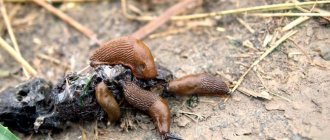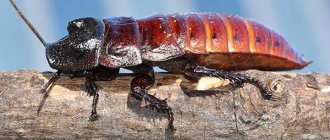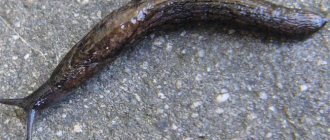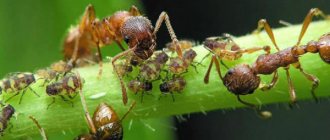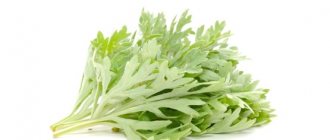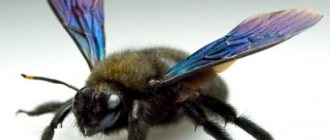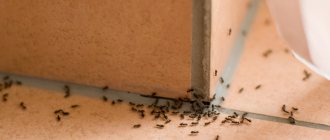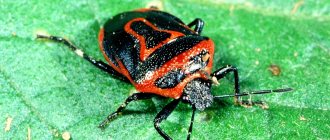Omnivorous gastropods are the scourge of the modern summer resident. Although, it would seem, just recently, invasions of slugs and snails were a novelty for us. Why have summer cottages become so attractive for mollusks, and most importantly, how can you protect your harvest from invaders?
For many years, summer residents and gastropods managed to maintain parity. Slugs and snails, if they appeared in the beds, were in relatively small quantities. In one year there was a little less, in another - a little more, and some particularly “fruitful” seasons for snails were rare.
However, in the last few years, mollusks began to appear on the sites in some unimaginable quantities. Not to mention the fact that in some regions the appearance of the Spanish slug, a completely new species of gastropod pest, characterized by an unusually large size, has been observed.
- The garden is being attacked by huge slugs: how to deal with the scourge
How dangerous are unusual “aliens” and is it necessary to fight them?
Is there a way to get rid of uninvited guests and protect your harvest from them?
Why are there a lot of snails and slugs on the site?
Warm winters in a particular region . The unusually warm winter is the main reason for such a massive and widespread distribution of snails and slugs. In cold winters (and for gastropods, even a temperature of 0°C is a serious test), a significant number of slugs that were born last year die. The same fate befalls a certain percentage of the eggs that these mollusks managed to lay in the previous season.
If warm and damp weather sets in during the autumn-winter period, slugs, snails, as well as their clutches of eggs, survive safely until spring, thereby creating a large number of problems for gardeners.
Spread of Invasive Species . The red slug (Arion lusitanicus) is a giant (7-10 cm) gastropod that has not left the Iberian Peninsula for many years. However, from the mid-twentieth century, representatives of this species began to rapidly spread throughout the continent.
According to one of the most common versions, the red slug came to Central and Northern Europe along trade routes. At first, scientists did not consider it as a threat, because they believed that the “southerner” would not take root in colder regions. However, uncharacteristically warm winters and the absence of natural enemies broke the orderly logical chain of conclusions drawn by experts.
The overstuffed Pyrenees very quickly settled into the new territories, diversifying the already rich assortment of garden pests.
- All garden pests in tables with descriptions, photos and control measures
We have compiled a “dossier” for you on each pest - save this collection!
Favorable conditions in a specific area. Slugs prefer to live in dark and damp places. Mollusks are especially active in areas located near water bodies, as well as in areas that no one cares for.
The more secluded places you can hide in, the higher the likelihood that the population of slugs living in a particular area will only grow from year to year.
- How to get rid of slugs on your property - effective pest control measures
Find out what slugs are afraid of and how to deal with their infestation.
Chemicals
Natural methods do not always bring results, especially if the summer is rainy. In this case, you have to use chemicals.
Using the following drugs, you can get rid of slugs and snails:
- Mesurol. These are granules that are scattered abundantly in the habitats of mollusks. Suitable for use even at low temperatures. It turns out that the effect is almost immediate - the snails are deprived of mucus. The drug is used 2-3 times, depending on the complexity of the situation and until the pests are destroyed.
- Nemaslug. The product contains nematodes that penetrate the body of snails, causing their slow death. After about 5 days, the pests stop feeding and die after 10-14 days.
A product is used to spray or water plants. It is enough to carry out 1-3 treatments per season. - Anti-slip gel. The product has no odor. The drug is applied strictly around the plants. A coating is created that provides reliable protection against slug attacks.
When grown indoors, the area around the greenhouse is treated, since pests can penetrate inside through underground tunnels.
The use of chemistry does not leave its mark on the environment. Therefore, it is strictly forbidden to exceed the dosage specified in the instructions.
Snails on the site - what to do?
If we take into account the fact that we cannot influence either global warming or the rate of spread of new species of gastropods, then the prospects for pest control look depressing.
However, there is still no need to despair. If you follow all agrotechnical recommendations and use not one, but several time-tested methods of combating mollusks, then you will still be able to significantly reduce the population of slugs and snails living on your site.
Who are we dealing with?
Snails are called gastropods. They are nocturnal. Sometimes snails hunt in cloudy weather during the day.
A snail differs from a slug in that its body is protected by a shell. It is three-layered: horny, medium-limestone and mother-of-pearl. For this reason, this type of mollusk is usually found on limestone soils. The breathing process is carried out through the hole located on the right side of the sink. There are tentacles on the surface of the head.
Long “horns” carry out the visual function. These organs detect light intensity, touch and smell. The sense of smell is highly sensitive. For this reason, gastropods sense prey at a 2-meter distance. There are more than 15 thousand sharp teeth in the mouth to grind food.
Folk remedies for slugs and snails
In a situation where slugs have not yet had time to “establish themselves” on the site, folk remedies will come to the rescue. The degree of effectiveness of a particular method is often the subject of debate among both professionals and amateurs, so the decision about whether to use folk remedies to fight slugs or not will in any case depend on you.
Ash dusting . Gastropods have very delicate skin on their abdomen, so they cannot crawl everywhere. Sprinkle ash or tobacco dust in places where slugs often gather, dust the plants with it, and then the slugs will avoid these areas.
Please note that high efficiency when using ash or tobacco dust can only be achieved if the “substrate” does not get wet and spread. That is why dusting is more suitable for pest control in greenhouses and greenhouses.
- 4 win-win ways to use wood ash in the country
Useful recipes for using ash in your summer cottage.
Mulching . Despite the fact that slugs often spend the winter in a “soft” substrate, mulch made from pine cones, pine litter, nut shells or broken eggshells serves as a serious obstacle to the movement of the pest.
In order for the use of mulch to bring the desired result, the substrate must remain “prickly”. Eggshells, for example, will eventually sink into the ground, break or fray, so they will have to be constantly renewed.
Repellent plants . It is believed that the smell of some plants is so unpleasant to mollusks that they try to avoid beds with them. Such crops include, for example, rosemary, parsley, thyme (thyme), sage, basil, lavender, and yarrow.
- 7 plants that will help repel slugs and snails from your garden beds
Plant healthy herbs in your garden.
Ammonia . Dilute 100 g of ammonia in 10 liters of water and spray it on all the plants on which slugs appear most often, as well as the soil around them.
- Several ways to use ammonia in the garden
It turns out that the usual ammonia can be useful not only in the home medicine cabinet, but also in the garden.
Traps . During daylight hours, slugs, deprived of natural protection from the sun, prefer to hide in the shade. All you need is to make one or more makeshift shelters from an armful of leaves, grass, a piece of linoleum, a piece of slate or any other item from which you can build a “house”.
Installed traps should be checked regularly to get rid of uninvited guests in a timely manner.
To combat slugs, traps dug into the ground with beer bait are often used. The intoxicating drink is poured into cans and placed in flower beds so that the edges of the container are at ground level. Attracted by the beer, the slugs will crawl towards the can and fall into it.
- How to deal with slugs on the site: folk remedies and chemicals
Spring has arrived, which means numerous pests are awakening. Some of the most unpleasant are slugs, which can destroy almost all plantings.
Irrigation adjustments
One of the factors that provokes the appearance of slugs and snails in the garden is abundant watering. Moisture that accumulates not only in the soil, but also on plants, attracts slugs.
Watering is best done early in the morning and by evening the soil will have time to dry out sufficiently. Regularly remove old mulch from the area, periodically laying a new layer. This will help reduce the number of waterings, but maintain an optimal level of soil moisture.
Wet mulch is one of the favorite habitats for slugs and snails, as it creates ideal conditions for them.
Chemicals against slugs and snails
As you probably already understood, the main goal of most folk methods of fighting slugs is not destruction, but scaring away, so you are unlikely to be able to solve the problem radically in this way.
However, you shouldn’t completely discount folk remedies, since they serve as a fairly effective complement to chemical drugs.
Molluscicides are special preparations designed to combat snails and slugs. Granules of molluscicides are scattered in places where gastropods often gather or placed in traps - those same “houses” made of cardboard, slate or plant debris that summer residents build to collect slugs and snails in one place, and after just a few days the number of mollusks is noticeable will decrease.
The main thing is to carefully study the instructions for the drugs, since some of them have quite long waiting times, and especially “impact” molluscicides can only be used in spring or late autumn, after harvesting.
Popular molluscicides: Predator, Groza-3, Slug Eater, StopUlit.
- Autumn invasion of slugs: how to stop
Slugs haunt summer residents neither in summer nor in autumn. How to stop insatiable pests?
conclusions
In conclusion, it can be noted that although chemicals do their job, they remain chemicals, substances foreign to the soil and the beneficial bacteria inhabiting it. There is no need to think that the poisons themselves will do all the work, and you will only reap the harvest. Even if this is so, how useful will the fruits be and will they be at all?
Simple recommendations for traps and barriers will not only help prevent slug infestations, but will also make the soil more fertile. And remember one wise thought, which goes back far to our ancestors: “Bowing to the earth is not alien, it will thank you a hundredfold!”
Agrotechnical methods of combating slugs
In the fight against slugs and snails, as well as in the fight against other garden pests, the main thing is a systematic approach, which consists of a competent combination of folk, agrotechnical and chemical means.
Since slugs love shady places and high humidity, your main task will be to create conditions in which the slugs will have nowhere to hide. To do this, you will only need to follow certain precautions.
- Regularly get rid of weeds and monitor the height of grass on lawns and lawns. Don't forget about the area around the fence.
- Remove plant debris promptly.
- Do not allow plantings to become dense.
- Attract natural enemies of snails and slugs to the site: hedgehogs, birds, frogs and toads.
- At least twice a year (spring and autumn), carry out a general cleaning of the area, paying special attention to searching for and destroying clutches of eggs.
- Slug eggs on the site - how to get rid of them in autumn and spring
You can fight pest mollusks at every stage of their development.
Shellfish are an important part of the ecosystem, so you are unlikely to be able to completely remove them. But to reduce the population size to the “optimal” amount, i.e. one in which you will notice individual individuals is quite possible.
Life cycle
Each slug is hermaphrodite - has both female and male genital organs. They recognize each other by smell. They usually lay 30 eggs, 2 mm in diameter, collected in compact piles. After 3 thinnings, young animals appear that are able to feed on organic matter already in the first day of their life. After 6.5 weeks, the pests are ready to mate. Each individual lays up to 500 eggs during the season.
With the onset of cold weather, many individuals die; some remain to overwinter in the soil. In the spring, the life cycle of the creatures repeats.
How do traps work and what are they made from?
A bait and trap for snails can be constructed from available materials and materials, so it will cost practically nothing. One option is a flat board, cabbage leaves, orange or grapefruit peels, located in the expected mollusk habitat areas.
At night, pests will crawl under abandoned objects and remain there until the morning. After removing any snails, you will need to prepare new traps. An interesting trap option is with beer or cornmeal in a glass or glass jar. The drink and flour attract snails by smell.
Trying to eat a treat, they crawl into a container (previously buried two-thirds into the ground) and fall into a trap. In the case of beer, the snails simply will not be able to get out; with flour, they will die from the action of the product.
A snail repellent based on a mixture of honey and yeast is a good bait. Just like beer, the mixture is placed in a container deep enough so that once snails get into it they cannot escape. Traps need to be checked at least every two days, freeing them from captives and filling them with new baits.
